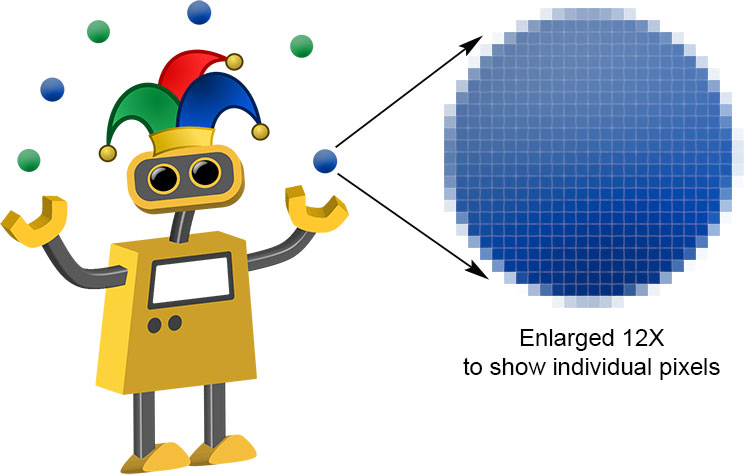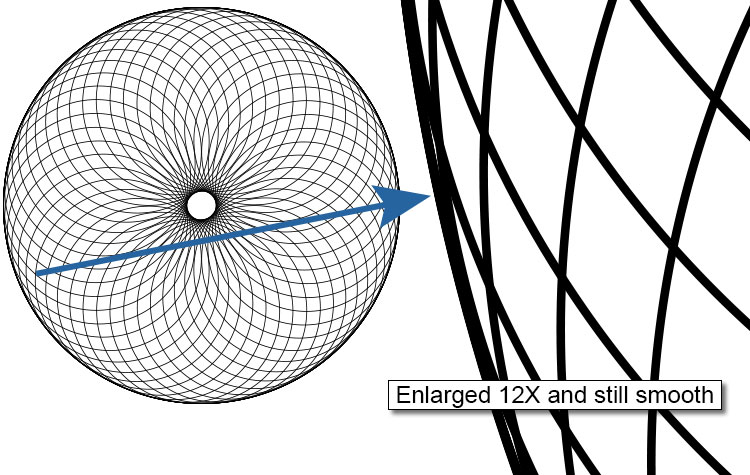Bitmap (or raster) images are stored as a series of tiny dots called pixels. Each pixel is actually a very small square that is assigned a color, and then arranged in a pattern to form the image. When you zoom in on a bitmap image you can see the individual pixels that make up that image. Bitmap graphics can be edited by erasing or changing the color of individual pixels using a program such as Adobe Photoshop.

Sample raster graphic from FCIT’s collection of robot illustrations on the TIM website.
Unlike bitmaps, vector images are not based on pixel patterns, but instead use mathematical formulas to draw lines and curves that can be combined to create an image from geometric objects such as circles and polygons. Vector images are edited by manipulating the lines and curves that make up the image using a program such as Adobe Illustrator.
Vector images have some important advantages over bitmap images. Vector images tend to be smaller than bitmap images. That’s because a bitmap image has to store color information for each individual pixel that forms the image. A vector image just has to store the mathematical formulas that make up the image, which take up less space.

Sample vector graphic from FCIT’s collection of Math illustrations on the ClipArt ETC website.
Vector images are also more scalable than bitmap images. When a bitmap image is scaled up you begin to see the individual pixels that make up the image. This is most noticeable in the edges of the image. There are ways of making these jagged edges less noticeable but this often results in making the image blurry as well. When a vector image is scaled up, the image is redrawn using the mathematical formula, so the resulting image is just as smooth as the original.
The three most popular image formats used on the Web (PNG, JPEG, and GIF) are bitmap formats. The Scalable Vector Graphics (SVG) format comes in a distant fourth due to a legacy of poor support for vector graphics in early browsers. Today however, all major browsers support the SVG (Scalable Vector Graphics) format.
Bitmap formats are best for images that need to have a wide range of color gradations, such as most photographs. Vector formats, on the other hand, are better for images that consist of a few areas of solid color. Examples of images that are well suited for the vector format include logos and type.